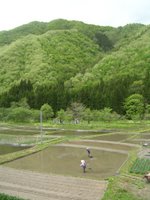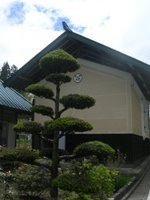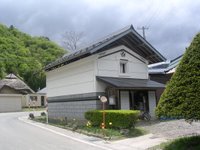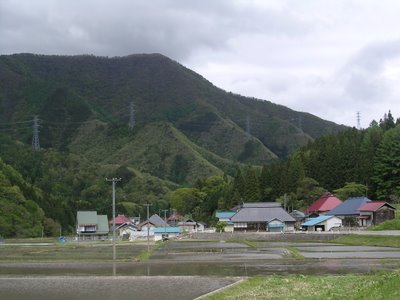
I decided to try a new cycling route on Friday afternoon, and I was extremely happy to do so. The route I took was very picturesque and the road was very quiet. I felt I had seen the first 'real' Japanese countryside since I arrived nearly 3 years ago. The weather was also very pleasant, despite the forecast for rain. All in all, a perfect afternoons cycling. I plan to return to this route sometime next week in order to reach the town of Showa (about 30km from Shimogo).
 My favourite kind of building in the Japanese countryside is the traditional style storehouse. These are constructed of stone. In the past, most old houses were constructed of wood, and as a result, very few remain. However, the stone storehouses are much sturdier due to their stone construction. On the gable end of these storehouses, you can often see the family crest of the family which owns it.
My favourite kind of building in the Japanese countryside is the traditional style storehouse. These are constructed of stone. In the past, most old houses were constructed of wood, and as a result, very few remain. However, the stone storehouses are much sturdier due to their stone construction. On the gable end of these storehouses, you can often see the family crest of the family which owns it. I believe that these storehouses are primarily used to store the rice harvest, but are also used to store precious or rarely used household objects.

Perhaps I should also explain why the storehouses are made of stone. The main reason is the risk of fire in Japan has always been high. Obviously a store built largely of stone does not burn as easily, thus protecting the rice and any precious objects stored within. Another positive spin off is that the stone storehouses are cooler inside than the more traditional wooden structures. Therefore, the rice stored within stays fresher for longer.
 The picture above shows a fairly charming little hamlet (though technically part of Shimogo) surrounded by rice fields and tree covered mountains.
The picture above shows a fairly charming little hamlet (though technically part of Shimogo) surrounded by rice fields and tree covered mountains.
No comments:
Post a Comment